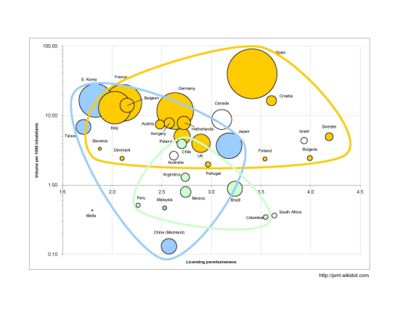On his blog Rasmus has a very cool motto that warns the reader not to be too impressed with large numbers:
Multiplication can produce powerful numbers.
But it is a difficult motto to follow since we live in a world where measurability is all important. We want to know, we need to know what is bigger, smaller, cheaper, richer, higher, etc so we measure stuff – constantly. To measure also implies that we compare. Are we getting bigger, better or not?
So every now and then someone asks the inevitable question: but how big is Creative Commons? and I am reminded of the motto above. One of the problems is that we need to measure, we want to measure and yet large numbers lose their meaning and become vague: in Swedish their is a wonderful word for this vagueness ogreppbar which translates as ungripable.
Anyway for those of use that still want to see the numbers Creative Commons has a page on Metrics which attempts to present the data. For example as the first bar chart shows there are now clearly over 130 million copyrighted objects licensed under Creative Commons licenses (personally I think this figure is a bit low…)

The next natural question (for me) is who are these people? That is tricky. But we may gain som insights by looking at the jurisdictional spread of Creative Commons licenses. Keep in mind that their is no limitation for a Frenchman to choose to use a Swedish license while residing in Thailand. Also – the web doesn’t really care about physical geography.

The numbers are fun and interesting. They are indicative of something but remember “Multiplication can produce powerful numbers” you cannot find absolut truth in numbers.
 Just a note to say that I am giving a lecture March 10 at 6pm at London’s RSA on my new book,
Just a note to say that I am giving a lecture March 10 at 6pm at London’s RSA on my new book, 
